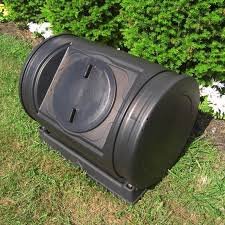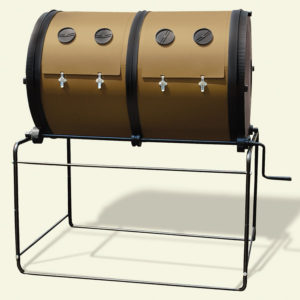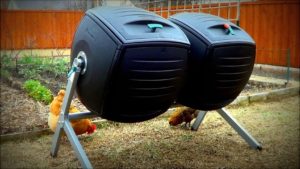How to Compost Human Waste
Disclaimer: These are my suggestions only, based on the comprehensive Composting Toilet Guidelines published by the Government of British Columbia in Canada, and recommendations from the World Health Organization. I make no guarantees about the accuracy of this information, and whether or not it applies to your specific situation. If in doubt you should check with your local authorities.
This article provides a general overview on how to compost human waste. It’s not much different from regular composting, but there are a few important things to know. If you follow a few simple steps, you will be able to compost human waste safely and easily, with zero odor.
Solid human waste (feces) can be safely composted by carefully following a few simple guidelines.
First, it is much easier to compost human waste waste from a urine diverting composting toilet. The material removed from a urine diverting toilet should be just slightly damp – perfect for composting. With a non-urine diverting toilet, the contents will be too wet for efficient composting, and the combination of urine and feces creates an anaerobic environment that allows very stinky bacteria to flourish (think outhouse or portable toilet at large public event. Ugh!). A urine diverting toilet is key to the successful composting of human waste, in my opinion.
Compostable Bags
The solid waste from a urine diverting toilet like the Thinktank or Separett is contained in a compostable bag. This key feature makes emptying the toilet clean and easy. It’s a big improvement over older style toilets where you add coco coir, peat moss etc. and turn a handle. However, I often get emails from people saying the compostable bags are not composting. Rest assured, they do. It just takes a bit longer. If they are definitely not disappearing after 9-12 months, then you may not be composting efficiently. You can watch the short video below which shows a compostable bag being composted in about 9 months. This was stationary cold composting. Hot composting, or a rotating tumbler, would do the job faster.
There is confusion about whether or not compostable bags introduce microplastics to the environment. The answer, according to various bag manufacturers, is no. There are no plastics of any kind in their compostable bags, and definitely no microplastics are being formed.
Cold Composting
This is the more common method, and requires the least effort from the user. However, it is slower. Experts recommend that waste removed from a composting toilet or waterless toilet sit undisturbed in a (cold) compost bin outside for between 6 months and 2 years. However, if you live in a cooler climate, I suggest letting it sit for a full two years, just to be safe.
The type of container is very, very important! It must not leach out the bottom or sides, as this might contaminate groundwater. It must be protected from rain and snow – it cannot get wet. And it must have lots of ventilation.
The easiest way to meet these requirements is a rotating compost drum or barrel that sits off the ground. You can build one if you are handy, and there are many sites on the web showing how to do that. You can also buy one fairly inexpensively. In my area hardware stores carry them starting at around $125.
Update: The Easy Way
The easiest method I have found is to fill a rotating drum about 25% with clean sawdust, or other organic material. Then add your waste as you produce it. Give it a turn every week or two. If it gets dry, add some green grass clippings or vegetable matter. If it seems a bit wet, add more sawdust. Worms will love it in there, and multiply. They help to break everything down. So add some worms if you can. Using this approach will minimize work and involvement.
CAREFUL: Some inexpensive compost tumblers have opening hatches that are a bit too small to easily accommodate a bag of human waste (which is roughly 7 gallons or 23 liters). Try to find one with a bigger hatch if possible.
Hot Composting
There is a technique called hot composting which will turn your waste into compost in as little as 4-6 weeks. You need to pay a bit more attention to the process. This usually requires an insulated compost bin, such as the Hotbin. However, cost is a serious consideration, as these bins are almost $1000 CAD! There are videos online on how to build your own insulated bin. I have not tested any of these bins.
You need to “feed” the hot composter weekly, to keep everything hot. If you forget about it, you will simply be cold composting. Hot composting has the additional advantage of being more effective at killing any residual pathogens. You can learn more by watching this excellent video.
Adding lime dramatically reduces the amount of time the compost must sit.

Two compost tumblers would be ideal.

Compost Tumbler
Your waste should ideally be stored in a container that is not open to the bottom. You do not want anything to leach out of the container, and potentially contaminate groundwater, or be accessible to kids or animals. A compost “pile” is not acceptable.
You might eventually need two drums, and you only use one at a time. Start using the first drum. It will take many months to fill it up, even a year or more, depending on usage and the size of the drum. When the first drum is full, add lime, and start using the second drum. When the second drum is full, the contents of the first drum should be ready for the plants.

Twin Compost Tumbler
Composting in general is not difficult, but a bit of knowledge is required. There are many websites and books that go into this in great detail. Basically the contents should be damp – not wet or dry. You might have to add a little water, or vegetable matter if it’s dry, or add some dry grass (or other dry material) if it’s too wet. Monitor your compost occasionally, and give it what it needs.
You should definitely add other material to the bin in addition to your human waste. There should be a mixture of “greens” (a source of nitrogen) and browns (a source of carbon). Green grass clippings, vegetable matter, coffee grounds and manure are examples of greens. Dry grass clippings, sawdust, straw, dry leaves and shredded paper are example of browns.
Much has been written about the “correct” ratio of greens and browns, and no one seems to agree. I don’t think about it too much, and add roughly 50:50 greens to browns. Human waste can be considered neutral, and not a green or a brown.
There should never be any odor. If there is, something is wrong, and you probably need to add more browns.

Compost Bins for Human Waste
Flies can be attracted to any compost pile. Keep flies down with a layer of dried grass, and by ensuring the compost does not get too wet.
Many people swear by adding worms to the compost bin. I have not experimented with this.
When composting human waste, it is important to use the finished compost on non-edible plants only, and not place it directly on something you will consume. This is because there is a very small chance that dangerous bacteria or viruses are still alive in the compost. You don’t want anyone getting sick.
Making compost from the output of your urine diverting toilet is easy. However you must be careful and do everything correctly.
(Note: I am not currently recommending any specific brands of composter. Pictures are for general information only.)
Which composting toilet is best? You can read all about it at Composting Toilets Canada and Composting Toilets USA.
Pee is Easy!
It is extremely easy to deal with urine from a urine diverting toilet. You can just use it as fertilizer! Some people dilute it, others do not find dilution necessary.
 You can download a wonderful guide to using urine as fertilizer from the Rich Earth Institute here. They have worked with numerous universities, public health regulators, the WHO and even the EPA to establish principles for using urine from a urine diverting toilet as fertilizer. The take away message from this guide is that, at the household level, urine is not a health risk, and can be used directly on plants without treatment. Sadly, many (most?) local governments are unaware of the facts around urine, and think it is somehow dangerous. Not true. Send them the guidelines.
You can download a wonderful guide to using urine as fertilizer from the Rich Earth Institute here. They have worked with numerous universities, public health regulators, the WHO and even the EPA to establish principles for using urine from a urine diverting toilet as fertilizer. The take away message from this guide is that, at the household level, urine is not a health risk, and can be used directly on plants without treatment. Sadly, many (most?) local governments are unaware of the facts around urine, and think it is somehow dangerous. Not true. Send them the guidelines.
If you follow these simple steps, you will have a complete, safe, odor free and low cost waste treatment facility on your property. Unlike conventional sewage or septic systems, you will completing the circle of nutrients, returning much of what you consumed back to the earth. You won’t be creating toxic sludge to be burned in a high temperature furnace, or treated in a typical sewage treatment plant using vast amounts of energy and producing considerable CO2.
Is there a link to get the Redmon compost tumbler in Canada? All your links are American and I’m not!
Yes. I typed Redmon Tumbler Canada into Google and got many links to purchase in Canada.
Hello,
I am planning on buying a Thinktank toilet to go in my tiny house. Still a few years away (logistics, selling home etc), but after purchasing my Thinktank (best made I have seen yet!) I also plan on buying a hot composing bin (Hotbin is one brand currently available) to deal with solid waste. It is my understanding hot composting can greatly reduce the time it takes turn things suitable for composting into actual compost. I thought this information might be of use to those who use or are considering composting/urine diverting toilets.
The Hotbin is a good idea. I have tested a similar product. I think it”s an improvement over other stationary bins. However, we have achieved fastest results with a rotating compost drum. I use the Redmon compost tumbler, and it was inexpensive. I think the best solution would be an insulated rotating bin, but I have not found a reasonably priced one yet.
I am looking to put a compost toilet on a fixed house or floating home. If I have no yard to leave waste to compost for 1-2 years or even 1 month,….How can I dispose of waste bag safely?
Without a space to compost you would have to bag the waste and put it in the trash.
If I use a rotating closed drum for the residuals and the contents are too dry for ideal composting, is it OK to add saved urine for moisture or am I inviting problems with odours and flies?
Add moisture. You must add nitrogen rich material, like green grass or vegetable matter. Usually this will provide all the moisture you need. If it is still dry, add water. We have not experimented with adding urine but it is worth a try.
I want to get a composting toilet for my RV that I will be living in full time. I live in a big city so how can I compost the solid waste in a very urban environment? There is nowhere to put a bin. I plan on going away weekends and on road trips a lot, is there somewhere appropriate I can do this? Thank you
If there is nowhere to store a bin then you will have to put it in a plastic bag and throw it in the garbage. This is not ideal, but really no different from throwing out disposable diapers.
Pingback: Composting 101 - GreenLatrine Composting Toilets